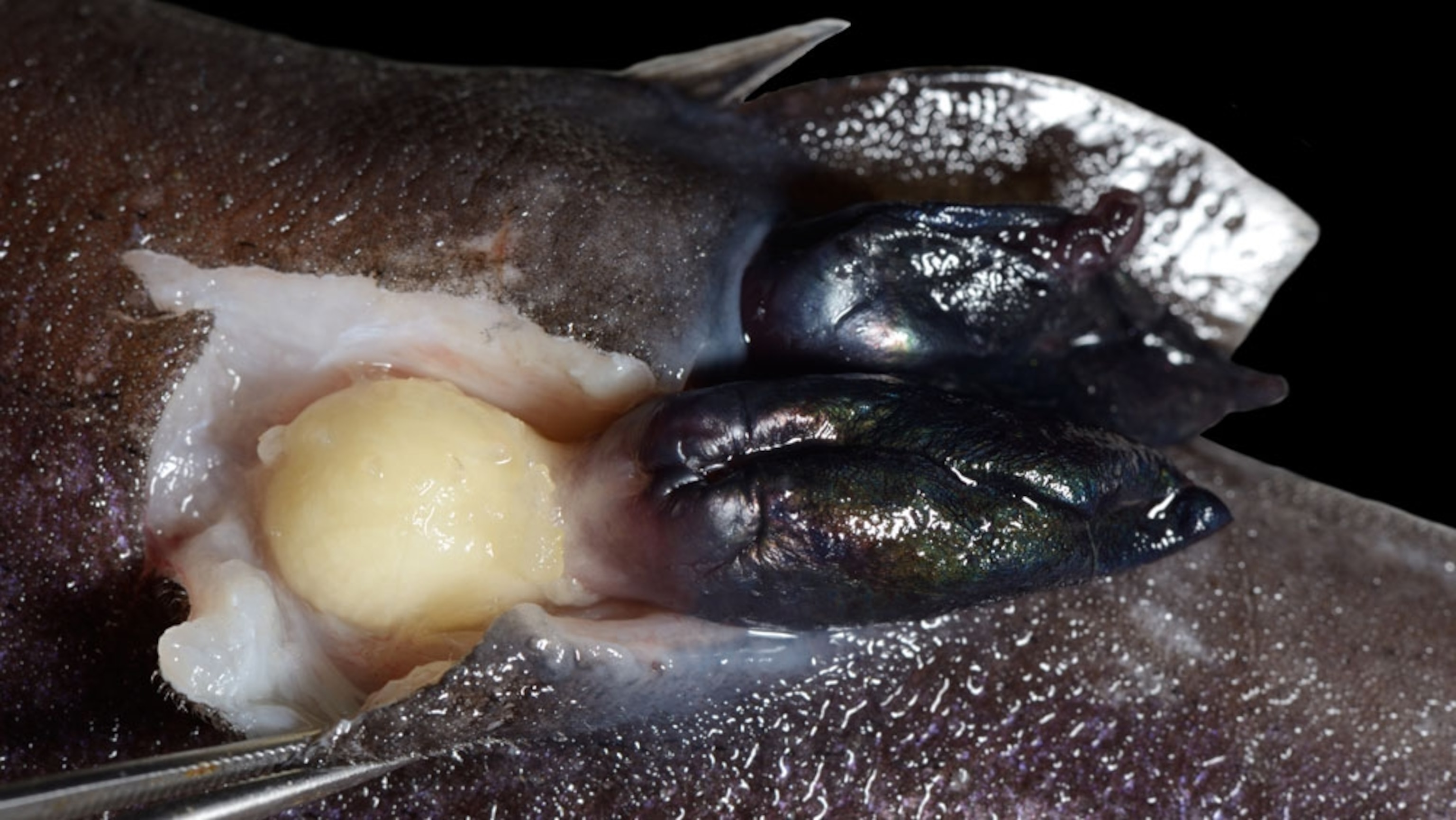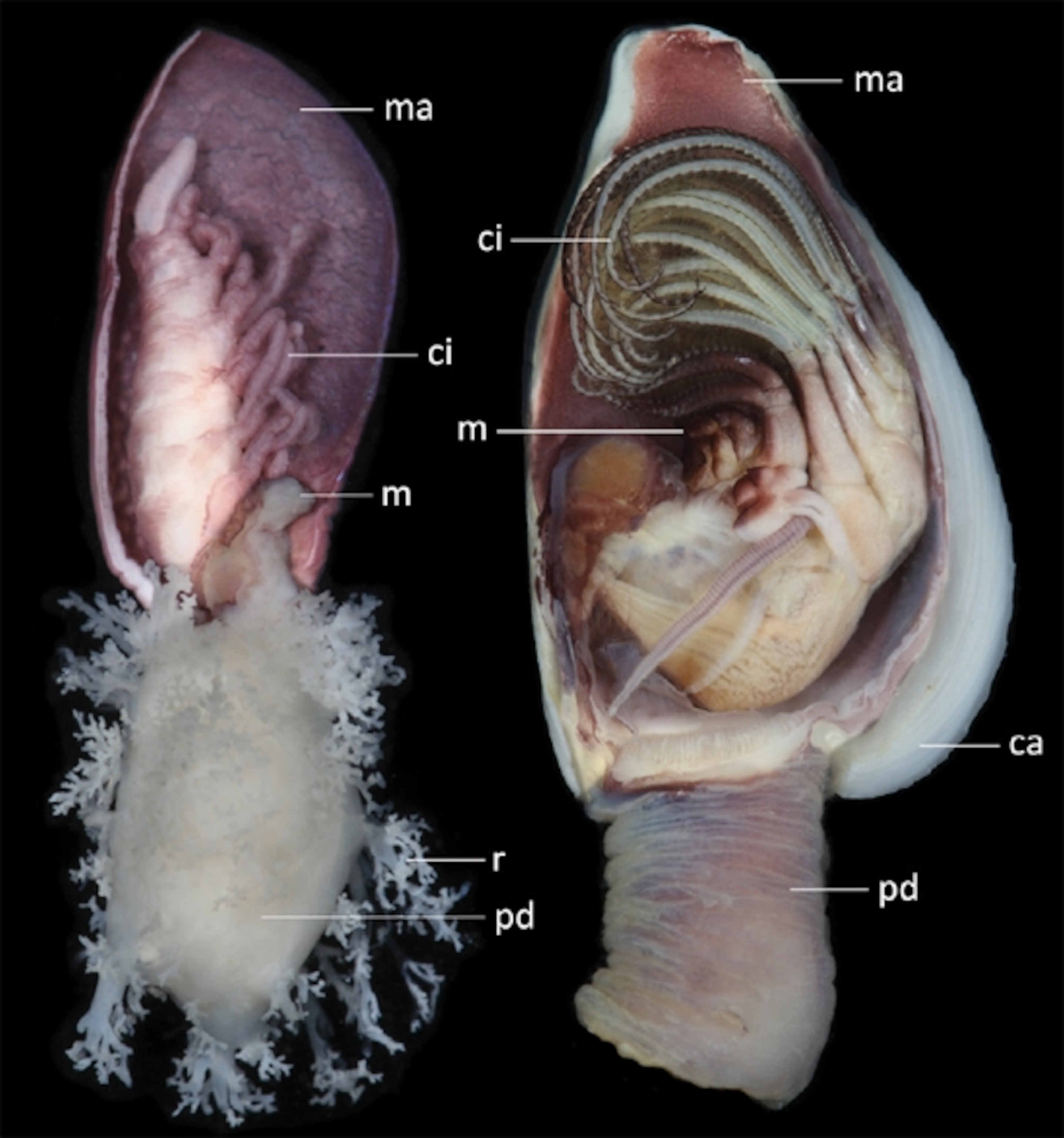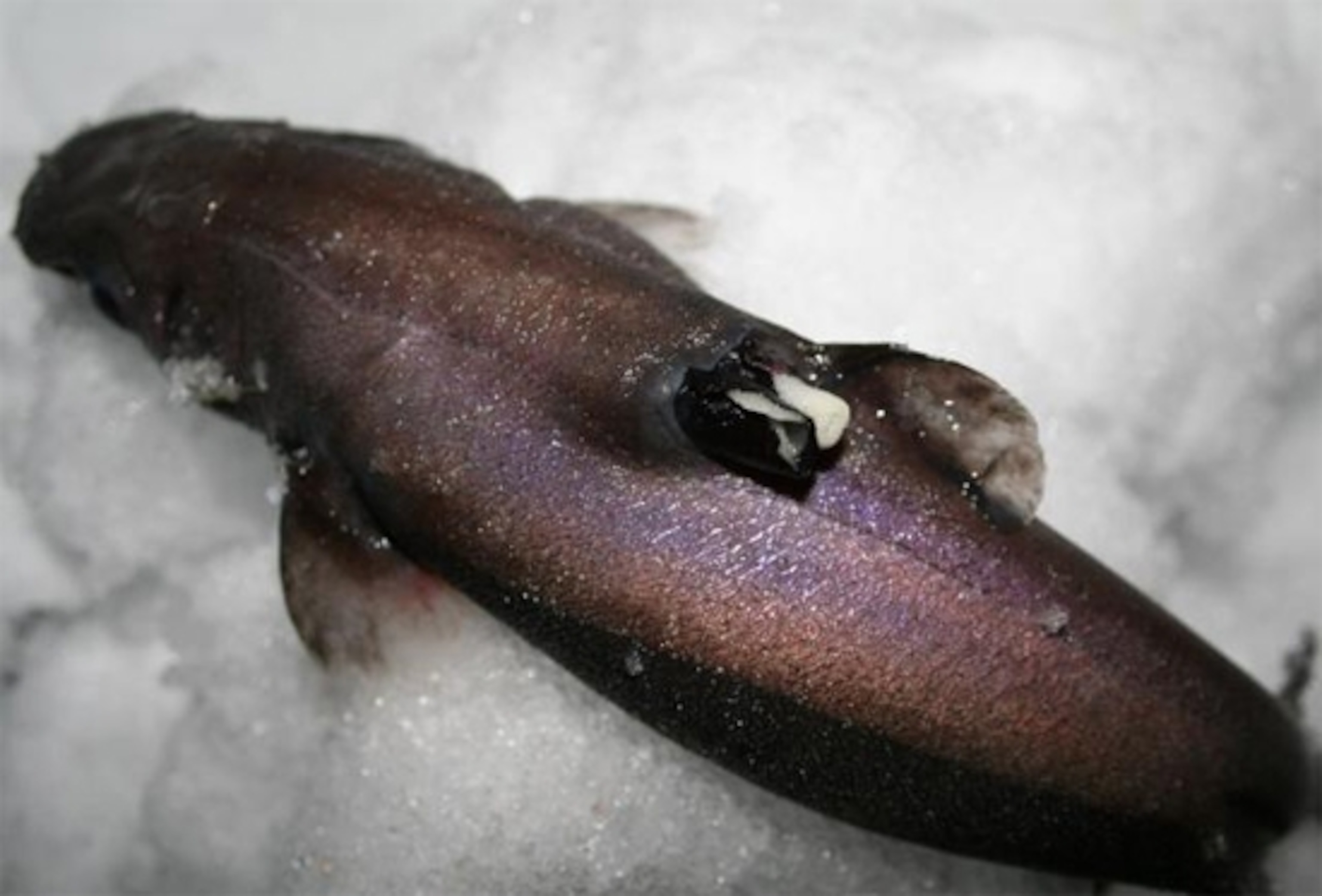
The Barnacle That Eats Glowing Sharks
Most barnacles sit on hard surfaces, and filter small particles of food from the surrounding water. But Anelasma squalicola is an exception. It’s a parasitic barnacle that eats sharks, by fastening itself to their flanks and draining nutrients from their flesh.
Charles Darwin, history’s greatest barnacle fanboy, described Anelasma in his 1851 magnum opus, and suggested that it was most likely a parasite. He was right, but the creature is so rare that few scientists have been able to study it in detail. That changed when Henrik Glenner discovered a large group of velvet belly lantern sharks—small fish with glowing bellies—off the western coast of Norway. The sharks were infested with the parasitic barnacles.
Glenner’s team at the University of Bergen, fronted by David John Rees, have now shown that Anelasma is a newly-minted parasite. It has only just made the evolutionary leap from filter-feeding to parasitism, and still retains many of the traits of its former life.
“The chances of finding such an organism are incredibly slim,” says Glenner. “It would have a brief evolutionary existence compared to its suspension-feeding predecessor and its parasitic successor. For evolutionary biologists, a chance to study all aspects of the biology of such a creature is a rare gift.”
Barnacles, despite their outward appearance, are crustaceans like crabs and lobsters. You can see the resemblance if you cut their shells open. Inside, you’ll find a weird creature that looks like a distorted prawn, lying on its back, with its legs sticking upwards. These legs are called cirri—they’re long and feathery, and the barnacle beats them to draw water into its shell and to sieve food from that water. There are around 1,000 species of barnacle and they’re almost all like this.
Anelasma is not. It lacks a hard shell. Its cirri are still there, but they are small and useless for feeding. It has a mouth and gut, but there’s never anything in them.
Instead, it feeds with a unique organ called a peduncle, which looks like a yellow onion with tree roots sprouting out of it. It’s not connected to the animal’s gut. Instead, the peduncle may be a modified version of the stalk that allows other barnacles to anchor themselves onto rocks; Anelasma uses it to anchor itself in flesh. Once there, it absorbs nutrients through the root-like filaments.

There are other parasitic barnacles. The rhizocephalans (from the Greek for “head root”) target their own kin—crabs and other crustaceans. As adults, they consist of little more than an external sac, and a root-like digestive system that threads its way through the body of their victims. They also castrate their hosts and addle their minds, so that the crabs care for their parasitic bulge as if it were a clutch of their own eggs. Even the males do this.
Rhizocephalans are completely unrecognisable as barnacles. That’s typical of many parasites, which have so thoroughly adapted to their exploitative lifestyles that they look nothing like their closest relatives. Anelasma bucks the trend. It’s very clearly still a barnacle. It has evolved a completely new feeding system, but it still has traces of the old one (the cirri). “This is a highly unusual situation,” says Glenner. “The selection pressure for both getting rid of the old redundant feeding system, and for improving the novel one, would change the [shape] of such an organism very fast.” That it exists in its current form is an unexpected delight.
Anelasma’s DNA yielded even more surprises. It’s reasonable to think that it evolved from whale barnacles, which attach themselves to whales without parasitising them. After all, this family is already adapted to riding on free-swimming animals, and often bury deeply into their hosts’ skin. But Anelasma’s closest relative is actually Capitulum mitella, a traditional filter-feeding barnacle that lives on rocky Indo-Pacific shorelines. Not a whale barnacle. Also: really quite a long way from Norway!
This suggests that Anelasma might be the last survivor of a much broader group of barnacles. Indeed, C.mitella might be Anelasma’s closest relative, but the two diverged from each other during the Cretaceous period, 120 million years ago. Since that time, perhaps Anelasma’s dynasty spread throughout the world, only to mostly go extinct.

Perhaps the weirdest thing about Anelasma is that it’s the only barnacle to parasitise a back-boned host. It’s not the others lack for opportunities. Many barnacles attach to whales, turtles, sea snakes and manatees. As Rees writes, there’s a “virtually endless food resource (tissue and blood) available just a few millimetres below the attachment site”. So why have so few of them evolved to tap into this nutritious seam?
No one knows. Glenner suspects that it’s just very hard for a barnacle to evolve the peduncle that Anelasma uses. It probably required a “rare combination of rare events” and his team are now trying to find out what those events were.
They also want to solve a few other mysteries about Anelasma. For example, how does it circumvent its host’s immune system? There’s never any inflammation around the buried peduncle, so the shark apparently treats the parasite as part of itself.
And why is it almost always found in pairs, sitting side by side on a lantern shark’s skin? It certainly doesn’t arrive in pairs. As larvae, Analesma is streamlined and can swim surprisingly fast in pursuit of sharks. But it settles independently, which is why some pairs contain a large individual (the longer resident) and a small one (the newer arrival). Perhaps, they eventually settle in pairs so they can always find a mate. Or perhaps these creatures have even more surprises left to discover.
Reference: Rees, Noever, Hoeg, Ommundsen & Glenner. 2014. On the Origin of a Novel Parasitic-Feeding Mode within Suspension-Feeding Barnacles. Current Biology. http://dx.doi.org/10.1016/j.cub.2014.05.030
More on barnacles: Poorly-endowed barnacles overthrow 150-year-old belief
